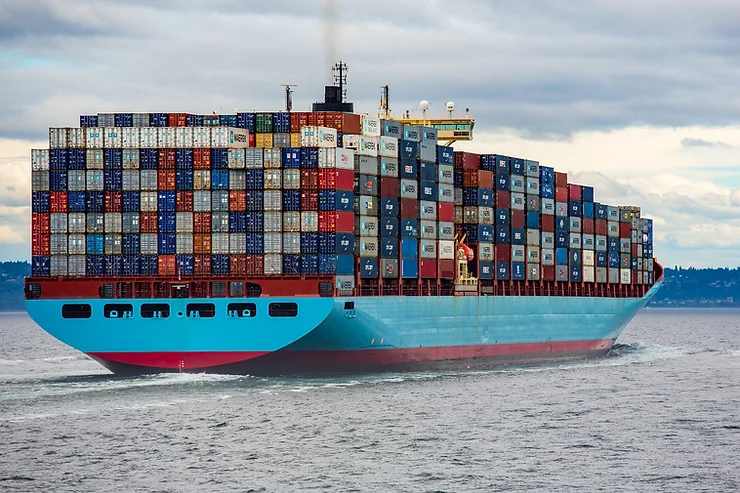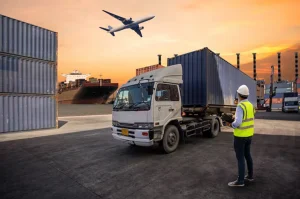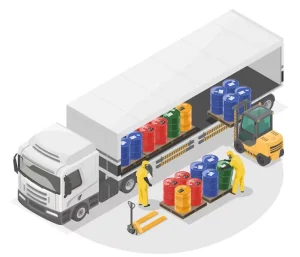Worldwide oversized cargo shipment by sea is a specialist logistics service that involves the transfer of big, heavy objects or machinery that cannot fit in normal shipping containers or traditional cargo ships. Oversized cargo can include machinery, industrial equipment, construction materials, vehicles, and even entire structures like oil rigs or wind turbines. Here are the key aspects of worldwide oversized cargo shipping by sea:
1. Types of Oversized Cargo: Oversized cargo can be categorized into various types, including:
-
Heavy Lift Cargo: Extremely heavy items that require specialized handling and lifting equipment.
-
Overdimensional Cargo: Items that exceed the standard dimensions of shipping containers, such as length, width, height, or weight.
-
Project Cargo: Large, complex shipments that may consist of multiple oversized components.
2. Specialized Vessels: To accommodate oversized cargo, specialized vessels are used, including:
-
Heavy-Lift Vessels: They are equipped with cranes and other heavy-lifting gear to handle extremely heavy items.
-
Ro-Ro (Roll-on/Roll-off) Vessels: They are Designed for cargo that can be rolled on and off the ship, such as construction vehicles.
-
Deck Cargo Ships: Flat-decked vessels suitable for carrying large and overdimensional cargo.
3. Route Planning: Planning the shipping route is crucial, taking into consideration factors like weather conditions, water depths, port facilities, and the dimensions of the cargo. Sometimes, routes may need to be modified to accommodate oversized cargo.
4. Customs and Documentation: Oversized cargo shipping involves complex customs and documentation requirements, including permits and licenses. This process varies from country to country and may require coordination with customs brokers.
5. Cargo Securing: Properly securing oversized cargo is essential to prevent shifting or damage during transit. This may involve using specialized bracing, lashing, or blocking methods.
6. Escort Services: Depending on the size and weight of the cargo, escort services may be required to accompany the shipment on both land and sea to ensure safety and compliance with regulations.
7. Project Management: For large-scale projects involving multiple oversized components, project management is crucial. This includes the planning, coordination, and tracking of all shipments to ensure they arrive on time and in the correct order.
8. Cost Considerations: Oversized cargo shipping can be expensive due to the specialized equipment and logistics involved. Costs may include vessel chartering, handling fees, permits, and insurance.
9. Environmental and Safety Regulations: Compliance with environmental regulations and safety standards is essential when transporting oversized cargo. This includes measures to protect against potential spills, emissions, and other environmental hazards.
10. Emergency Response Planning: In case of accidents or emergencies, it’s important to have a well-defined response plan to mitigate potential risks and ensure the safety of personnel and the environment.
11. Communication and Coordination: Effective communication and coordination among all parties involved, including shippers, carriers, port authorities, and customs agencies, are essential to the success of oversized cargo shipping projects.
Oversized cargo shipping by sea is a complex and highly specialized field that requires careful planning, expertise, and experience. Shippers often work with logistics companies and freight forwarders with expertise in this area to ensure the safe and efficient transportation of their oversized cargo worldwide.
Worldwide Oversized Cargo Shipping by Sea: Pros & Cons
Worldwide oversized cargo shipping by sea offers several advantages and disadvantages, depending on the specific needs and circumstances of a shipment. Here are some of the key pros and cons:
Pros:
-
Cost-Effective for Large Items: Shipping oversized cargo by sea can be more cost-effective than other transportation methods, especially when compared to airfreight. Ocean freight rates are generally lower, making it a viable option for heavy and bulky items.
-
Capacity for Extremely Large Cargo: Sea vessels, including heavy-lift and Ro-Ro ships, can accommodate exceptionally large and heavy cargo that cannot be transported by other means. This is especially beneficial for industries like construction, energy, and manufacturing.
-
Global Reach: Sea routes cover a significant portion of the Earth’s surface, allowing for access to many remote or international destinations. This makes it possible to transport oversized cargo to virtually any part of the world.
-
Flexibility: Shipping by sea offers flexibility in terms of cargo types and dimensions. Various types of cargo vessels are available, each designed for specific types of oversized cargo, whether it’s machinery, vehicles, or project cargo.
-
Reduced Wear and Tear: For fragile or sensitive oversized cargo, sea transport can be gentler on the cargo itself, reducing the risk of damage during transit when compared to overland transportation on rough roads.
Cons:
-
Slower Transit Times: One of the main drawbacks of sea shipping is its relatively slow transit times. It can take weeks or even months for cargo to reach its destination, which may not be suitable for time-sensitive shipments.
-
Port Limitations: Access to certain destinations may be limited by the availability and capacity of suitable ports. This can necessitate overland transportation to reach the final destination, adding to the overall logistics complexity.
-
Weather-Related Risks: Sea transport is susceptible to weather-related disruptions, such as storms and rough seas, which can lead to delays and potential cargo damage.
-
Customs and Regulatory Hurdles: Dealing with customs procedures, import/export regulations, and obtaining the necessary permits for oversized cargo can be time-consuming and require expertise.
-
Limited Accessibility: Some remote or landlocked areas may not have convenient access to ports, necessitating additional overland transportation to reach the sea route, which can increase costs.
Worldwide oversized cargo shipping by sea offers cost-effective and versatile options for transporting large and heavy items to global destinations. However, it also comes with challenges related to transit times and potential risks, which must be carefully considered when choosing this mode of transportation. The decision to use sea shipping should be based on the specific requirements of the cargo and the overall logistics strategy.
Georgian ports
Shipping oversized cargo by sea through Georgian sea ports is a feasible option for those looking to transport large and heavy cargo to various destinations worldwide. Georgia, situated at the crossroads of Europe and Asia, has strategically located ports on the Black Sea, making it an important transshipment point for cargo moving between neighboring regions. Here’s an overview of the process for shipping oversized cargo through Georgian sea ports:
-
Cargo Preparation and Packaging: Ensure that the oversized cargo is properly prepared, packaged, and secured for sea transportation. This may involve disassembling components, reinforcing structures, and using suitable packing materials to protect the cargo during transit.
-
Port Selection in Georgia: Georgia has several important sea ports on the Black Sea, including Poti and Batumi, and access to the Caspian Sea through the Port of Baku in Azerbaijan. Choose a port in Georgia based on your cargo’s destination and the transportation route you plan to use.
-
Vessel Selection: Depending on the size, weight, and type of cargo, select an appropriate vessel for the sea journey. Specialized vessels, such as heavy-lift vessels or Ro-Ro vessels, may be needed for oversized cargo. Ensure that the vessel has the necessary lifting and securing equipment.
-
Customs and Documentation: Prepare all required customs documentation and permits for both the export from Georgia and the import into the destination country. This includes customs clearance, import licenses, and any other regulatory requirements.
-
Route Planning: Plan the shipping route carefully, considering factors such as weather conditions, water depth, and the availability of suitable ports in the destination region. Common routes from Georgia may include routes through the Mediterranean, the Suez Canal, or the Caspian Sea, depending on the destination.
-
Inland Transportation: If the cargo needs to be transported to an inland location after arriving at the Georgian port, coordinate with local transport providers and logistics companies to arrange for suitable transportation methods, which may include rail or road.
-
Escort Services and Permits: Depending on the size and weight of the cargo, escort services and permits may be necessary for safe and legal transportation within Georgia and to neighboring countries.
-
Security and Safety: Implement security measures to protect the cargo during the entire transportation process, both at sea and on land. Ensure that the cargo is properly secured to prevent shifting and damage.
Shipping oversized cargo through Georgian sea ports offers advantages due to Georgia’s strategic location at the crossroads of major trade routes. However, it also involves complex logistics and regulatory considerations. Collaborating with experienced logistics providers and freight forwarders familiar with Georgian ports and the specific requirements of oversized cargo transport can streamline the process and ensure a successful delivery.
Toptrans: Your Trusted Logistics Partner
At TopTrans, we understand that oversized cargo shipping by sea demands precision, expertise, and a commitment to safety. With seven years of industry experience and a reputation for excellence, we offer a comprehensive suite of services tailored to meet the unique needs of oversized cargo transportation. Here’s how we can assist you in your oversized cargo shipping endeavors:
1. Cargo Assessment and Consultation
Before embarking on any journey, it’s crucial to know what you’re dealing with. Our team of experts conducts a thorough assessment of your oversized cargo to determine its specific requirements. We provide consultation services to help you understand the logistical challenges and opportunities associated with your shipment.
2. Route Planning and Optimization
Navigating the seas is no easy feat, especially when your cargo is oversized. We take pride in our ability to plan and optimize routes that ensure the safe and timely delivery of your cargo. Whether you’re shipping to Central Asia, Europe, or any other destination, we’ve got the routes covered.
3. Vessel Selection and Booking
Choosing the right vessel is a critical decision in oversized cargo shipping. Our team assists you in selecting the most suitable vessel for your cargo’s size, weight, and handling requirements. We handle all aspects of vessel booking, ensuring your cargo is onboard the right ship for the journey.
4. Customs and Documentation Support
The paperwork involved in international shipping can be daunting. TopTrans takes care of all customs procedures and documentation, ensuring compliance with regulations and the smooth clearance of your cargo.
5. Cargo Preparation and Securing
Properly preparing and securing oversized cargo is paramount to its safety during transit. Our team employs specialized techniques, including bracing, lashing, and blocking, to ensure your cargo arrives at its destination in pristine condition.
6. Inland Transportation Coordination
Once your cargo arrives at the port, our services don’t stop there. We coordinate the inland transportation leg of the journey, whether it involves specialized vehicles, railways, or river transport. Your cargo’s final destination is our priority.
7. Project Management Excellence
For large-scale projects involving multiple oversized components, our project management expertise shines. We plan, coordinate, and monitor all shipments within the project to ensure they arrive on time and in the correct sequence, minimizing disruptions.
8. Effective Communication and Coordination
Smooth communication and coordination are the cornerstones of successful oversized cargo shipping. We work closely with all stakeholders, including shippers, carriers, port authorities, customs agencies, and inland transport providers, to ensure a seamless journey.








